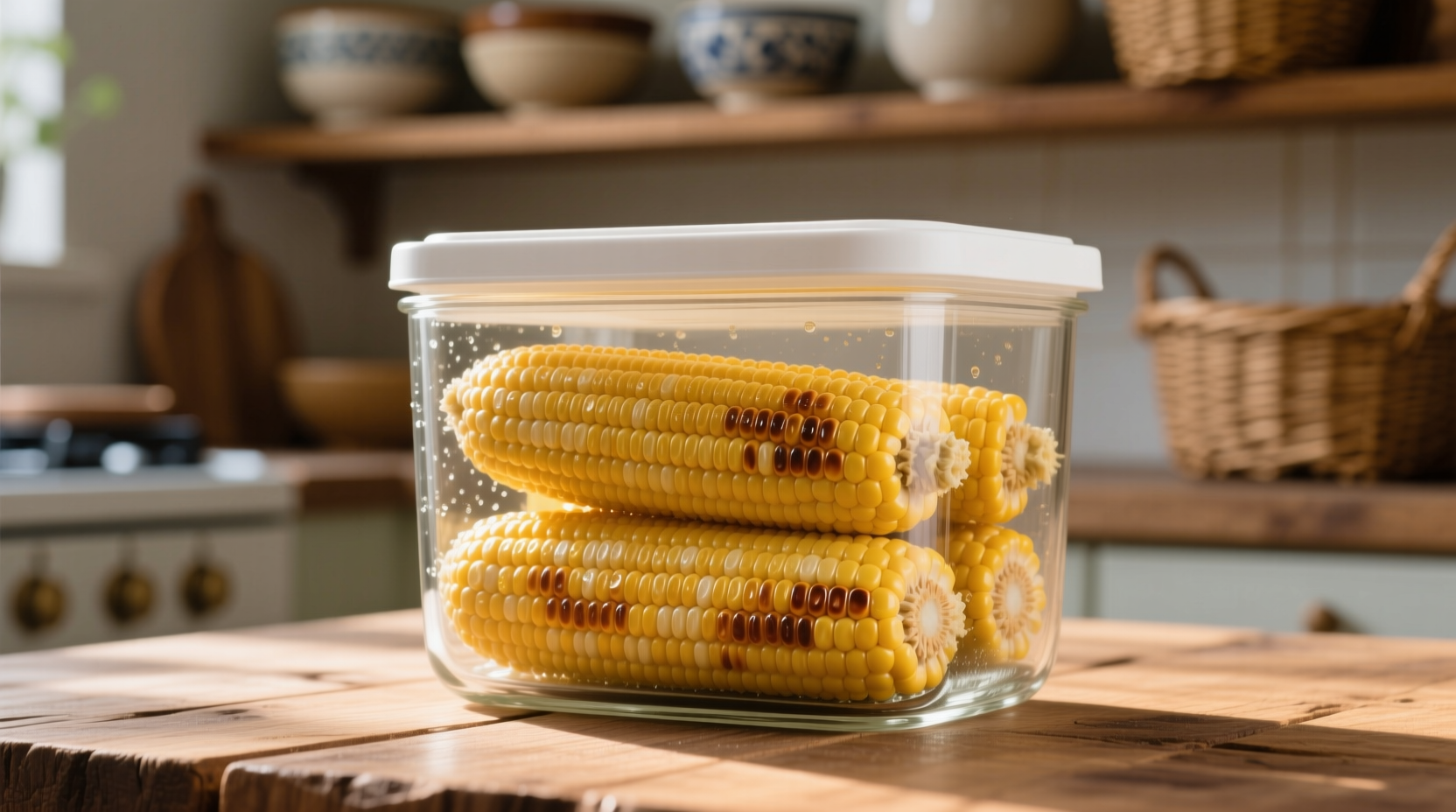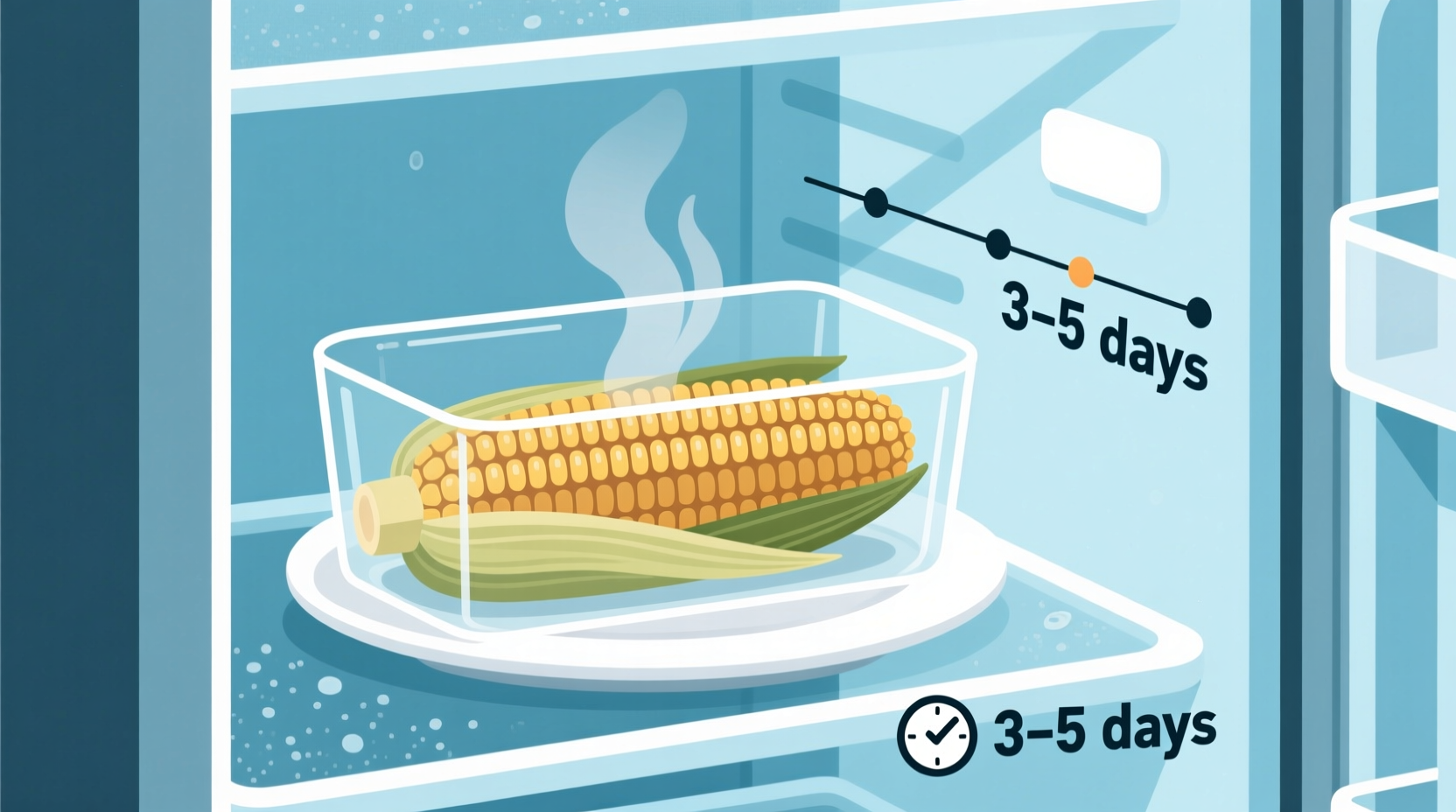Cooked corn stays fresh and safe to eat in the refrigerator for 3 to 5 days when stored properly in an airtight container at or below 40°F (4°C). This timeframe aligns with USDA food safety guidelines for cooked vegetables and prevents potential foodborne illness.
The Complete Guide to Storing Cooked Corn Safely
Nothing beats fresh corn on the cob, but what happens when you've cooked more than you can eat? Understanding proper storage isn't just about preventing waste—it's crucial for your health. Improperly stored cooked corn can harbor harmful bacteria like Listeria and Salmonella, putting you at risk for foodborne illness. Let's explore exactly how to maximize both safety and quality.
Why Proper Corn Storage Matters More Than You Think
Corn's natural sugars convert to starch quickly after cooking, but more importantly, its moisture content creates an ideal environment for bacterial growth. The USDA Food Safety and Inspection Service emphasizes that cooked vegetables fall into the "perishable" category that requires prompt refrigeration.
According to the USDA FoodKeeper app, all cooked vegetables—including corn—should be refrigerated within two hours of cooking (or one hour if temperatures exceed 90°F/32°C). This critical window prevents bacteria from multiplying to dangerous levels.
Step-by-Step: Maximizing Your Cooked Corn's Freshness
Follow this professional kitchen-tested process for optimal results:
- Cool rapidly - Spread corn in a single layer on a baking sheet for 15-20 minutes
- Remove kernels (optional) - For longer storage, cut kernels off the cob
- Container selection - Use glass or BPA-free plastic with tight-sealing lids
- Air removal - Press plastic wrap directly onto corn surface before sealing container
- Temperature check - Verify your refrigerator maintains 40°F (4°C) or below
| Storage Method | Refrigerator Lifespan | Quality Preservation |
|---|---|---|
| On the cob in open bowl | 1-2 days | Poor (dries out quickly) |
| On the cob in sealed container | 3-4 days | Good |
| Kernels in vacuum-sealed bag | 5 days | Excellent |
| Kernels in airtight container | 4-5 days | Very Good |
When Is Cooked Corn No Longer Safe? Critical Warning Signs
Don't rely solely on the calendar—your senses provide crucial safety information. Discard cooked corn immediately if you notice:
- Visual changes - Slimy texture, mold spots (white, green, or black), or discoloration
- Odor changes - Sour, fermented, or "off" smell (fresh corn should have a sweet, earthy aroma)
- Texture changes - Excessive mushiness or sliminess
- Taste test - Never taste questionable corn; the bacteria that cause spoilage can be harmful

Context Matters: Factors That Shorten Corn's Shelf Life
The standard 3-5 day guideline assumes ideal conditions. These factors can significantly reduce safety window:
- Temperature fluctuations - Opening refrigerator frequently raises internal temperature
- Initial cooking method - Boiled corn retains more moisture (shorter shelf life) than grilled
- Cross-contamination - Using utensils that contacted raw meat before handling corn
- Added ingredients - Butter, milk, or cheese mixed with corn reduces shelf life to 3 days
Food safety researchers at Cornell University's Food Safety Lab note that moisture content directly impacts bacterial growth rates in cooked vegetables. Corn stored with excess cooking liquid will spoil faster than properly drained corn.
Pro Tips for Extending Your Corn's Freshness
Professional kitchens use these techniques to maximize corn quality:
- Acid barrier - A light toss with lemon juice before storage slows bacterial growth
- Strategic layering - Place paper towel at bottom of container to absorb excess moisture
- Front-and-center storage - Keep corn in main refrigerator compartment (not door)
- Reheating protocol - Microwave with 1 tsp water to restore moisture without overcooking
Remember that freezing extends corn's life significantly—properly frozen corn maintains quality for 10-12 months. But for refrigerator storage, the 3-5 day rule remains your best safety guideline.
Common Questions About Cooked Corn Storage
Can I store cooked corn on the cob in the husk?
No, storing cooked corn in the husk traps moisture and creates an ideal environment for bacterial growth. Always remove husks before refrigerating cooked corn. The husk can actually accelerate spoilage by maintaining a warm, humid microclimate around the corn.
Does adding butter to cooked corn affect its refrigerator life?
Yes, dairy products reduce shelf life. Buttered corn should be consumed within 3 days rather than the standard 5 days for plain cooked corn. The fats in butter oxidize more quickly and provide additional nutrients for bacteria.
What's the best way to reheat refrigerated cooked corn?
For corn on the cob: Wrap in damp paper towel and microwave for 30-60 seconds. For kernels: Place in microwave-safe dish with 1 teaspoon of water, cover, and heat for 1-2 minutes. Avoid reheating multiple times as this increases food safety risks.
Can I tell if corn is bad just by the expiration date?
No, expiration dates are only guidelines. Always perform sensory checks for spoilage regardless of dates. The USDA emphasizes that "when in doubt, throw it out" is the safest approach with perishable foods like cooked corn.
Does the cooking method affect how long corn stays fresh?
Yes, boiled corn retains more moisture and typically lasts 1 day less than grilled or roasted corn. The drier preparation methods create less hospitable conditions for bacteria. Always drain boiled corn thoroughly before storing to maximize freshness.











 浙公网安备
33010002000092号
浙公网安备
33010002000092号 浙B2-20120091-4
浙B2-20120091-4